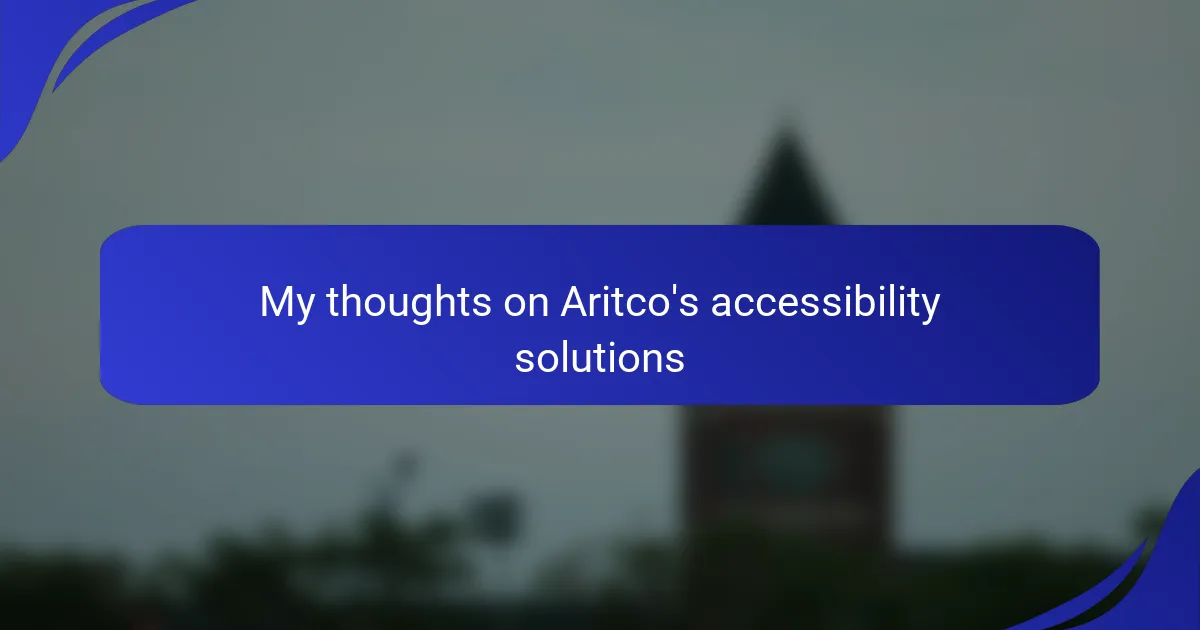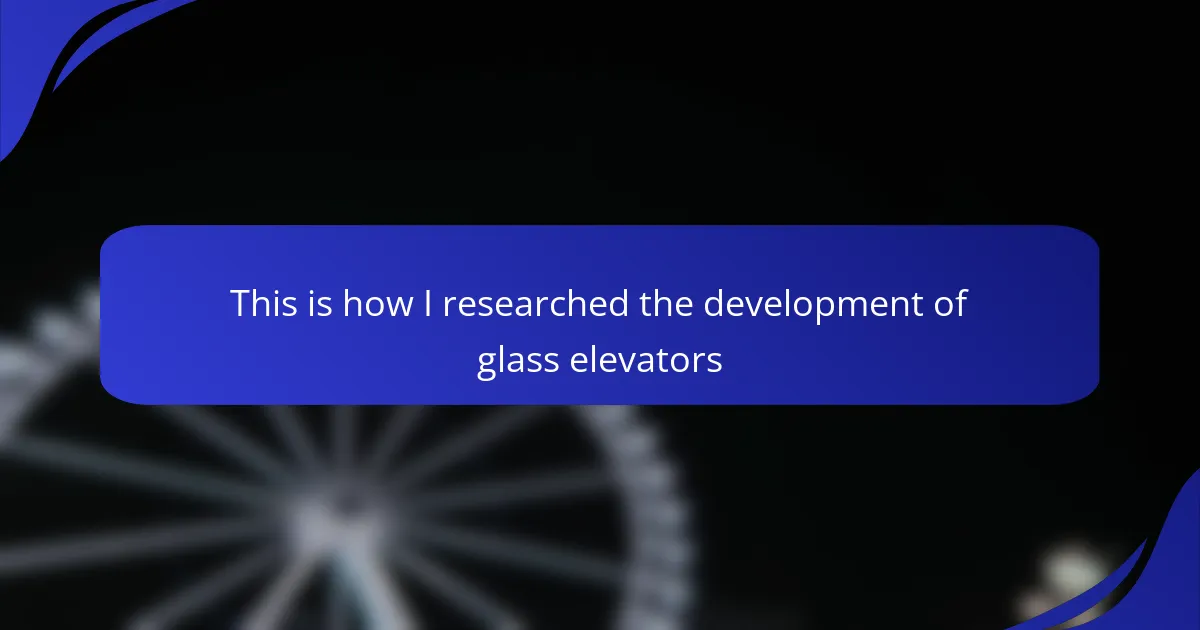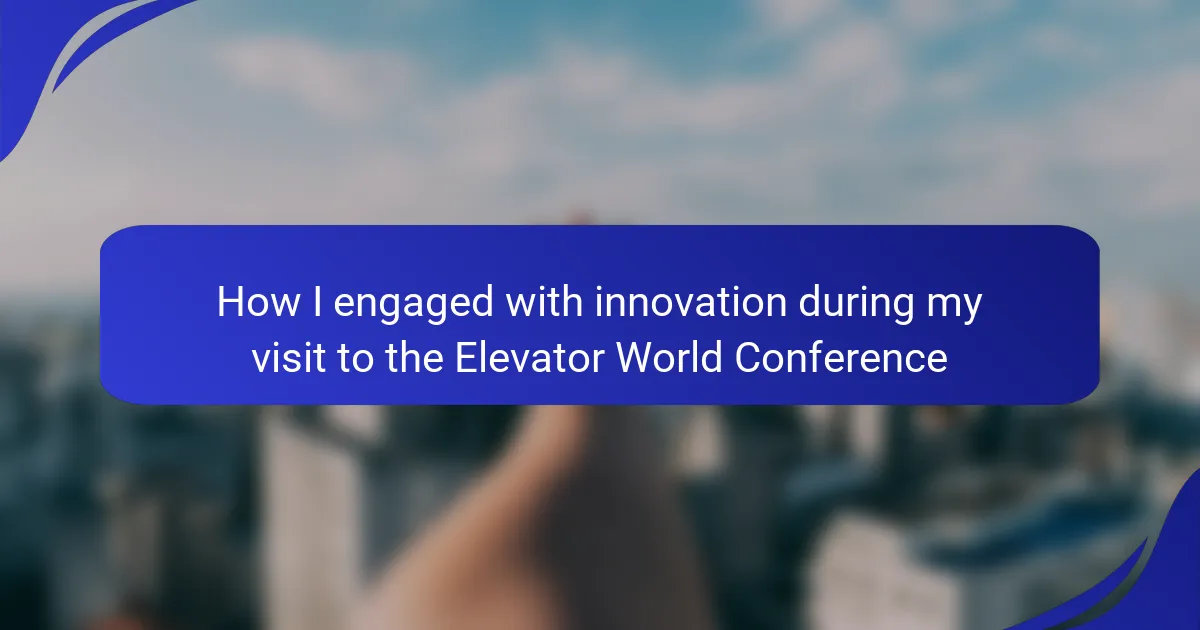Key takeaways
- The elevator industry has evolved significantly since the introduction of the safety elevator by Elisha Otis in the 1850s, leading to greater building accessibility and architectural possibilities.
- Accessibility solutions in elevators have transitioned from basic, manual options to advanced, user-friendly features like voice controls, enhancing inclusivity for everyone.
- Aritco is recognized for its commitment to innovation, prioritizing stylish and functional designs that improve mobility and independence for users with varying abilities.
- The future of accessibility in the elevator industry will be shaped by advancements such as AI integration, user-friendly interfaces, and community-focused designs, promoting equitable mobility solutions.
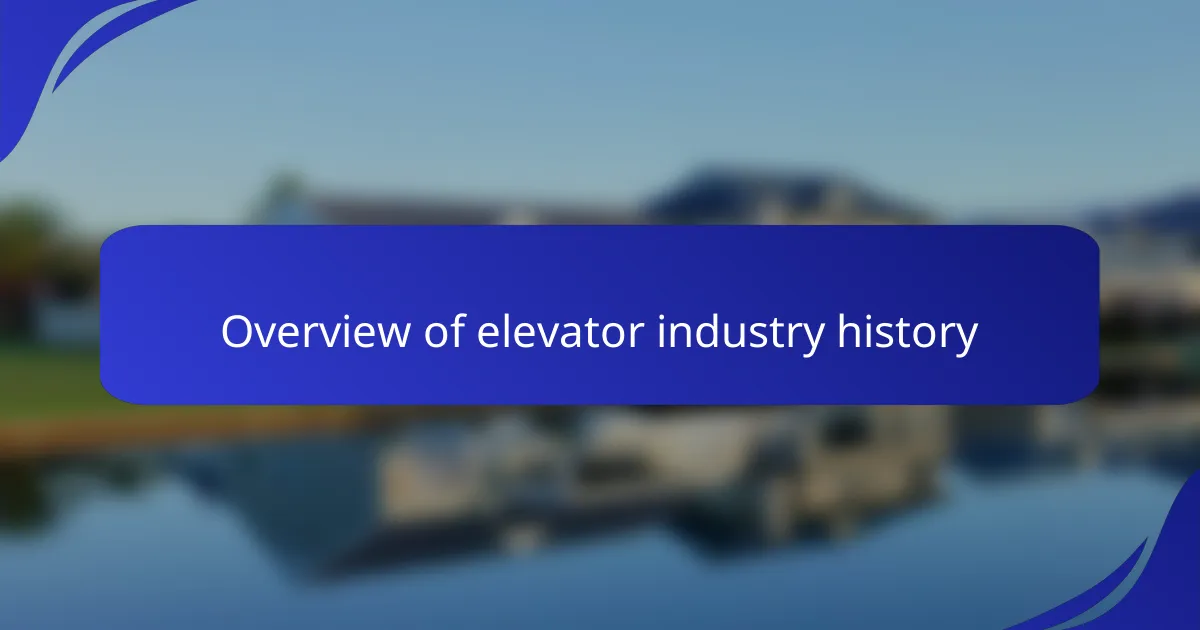
Overview of elevator industry history
The elevator industry has a rich history, evolving from simple hoisting devices to the sophisticated systems we rely on today. One of the major milestones was the invention of the safety elevator by Elisha Otis in the 1850s, which dramatically improved safety and paved the way for taller buildings. I often reflect on how this innovation transformed cities, allowing skylines to rise higher than ever before, a clear testament to human ingenuity.
The transition from hydraulic to electric elevators in the early 20th century further revolutionized the industry. This shift not only allowed for greater efficiency but also opened up new architectural possibilities. It’s fascinating to think about how elevators have become integral to urban life, making it easier for people to access various levels of buildings and enhancing the flow of daily activities.
| Year | Milestone |
|---|---|
| 1853 | Elisha Otis demonstrates the safety elevator. |
| 1900 | Transition to electric elevators begins. |
| 1930s | Hydraulic elevators become popular in mid-rise buildings. |
| 1970s | Introduction of microprocessor controls enhances performance. |
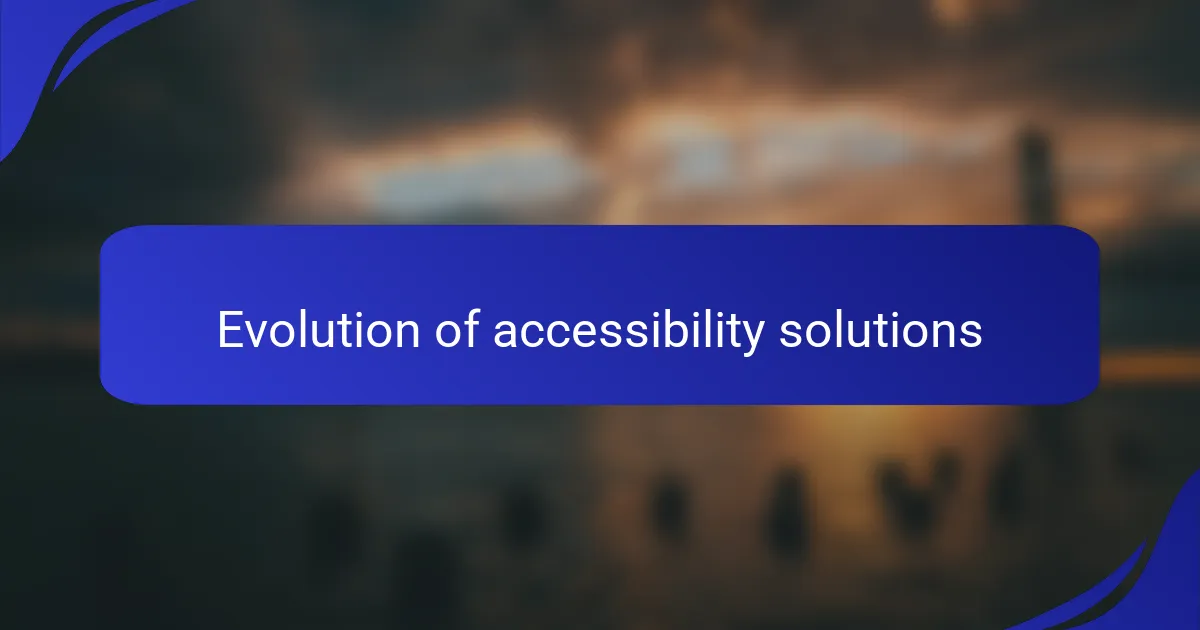
Evolution of accessibility solutions
Accessibility solutions have come a long way over the years, especially in the elevator industry. Early solutions were often limited and clunky, but advancements in technology have led to more efficient and user-friendly options. I remember the first time I encountered a modern, accessible elevator—it was a game changer for so many individuals who struggled with mobility issues.
The shift towards more inclusive designs speaks volumes about our society’s growing commitment to accessibility. Features like voice activation and touchless controls not only enhance usability but also address various needs. Witnessing these changes firsthand reminded me of the importance of making all public spaces welcoming and usable for everyone.
| Era | Accessibility Solutions |
|---|---|
| Early 20th Century | Manual elevators with limited access |
| Mid 20th Century | Introduction of basic lift systems with wheelchair access |
| 21st Century | Smart elevators with advanced features like voice controls |
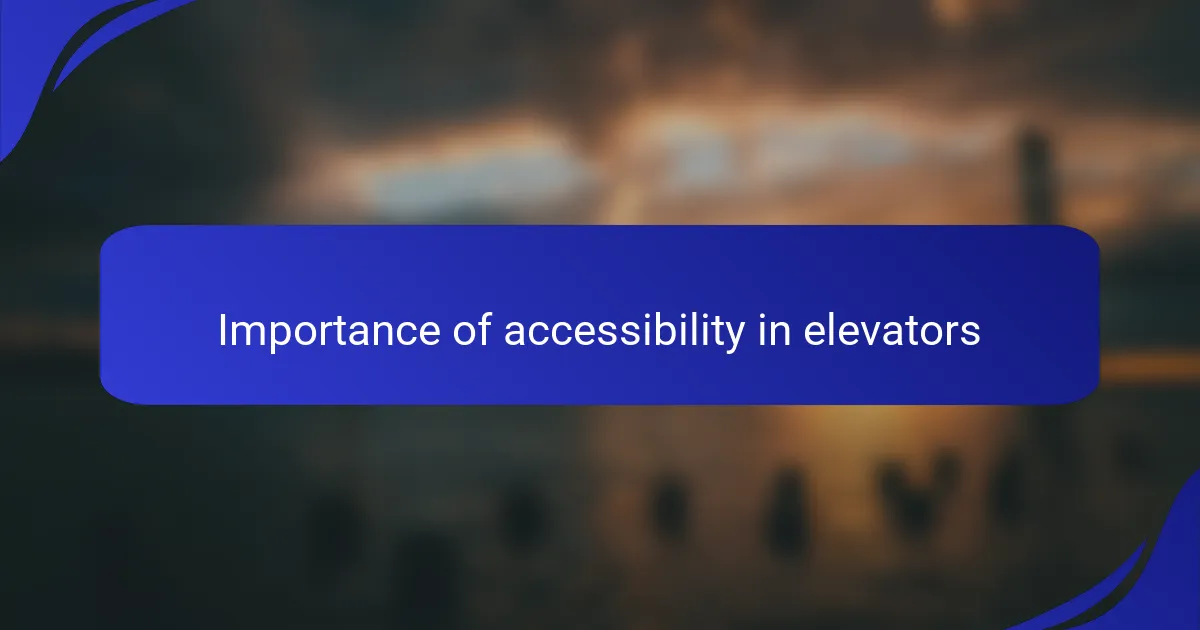
Importance of accessibility in elevators
Accessibility in elevators is crucial for ensuring that everyone, regardless of ability, can move freely within buildings. I’ve often witnessed the struggles individuals with mobility challenges face when elevators don’t accommodate their needs. It’s heart-wrenching to see someone unable to access a space that others find so simple.
Here are some key reasons why accessibility in elevators matters:
- Inclusivity: Elevators designed with accessibility in mind promote equal access for all users.
- Safety: Accessible elevators reduce the risk of accidents or emergencies, especially for those who need assistance.
- Compliance: Many regions have laws that require buildings to meet certain accessibility standards.
- Convenience: Features like voice prompts and larger buttons simplify the experience for everyone, not just those with disabilities.
- Social Responsibility: Investing in accessibility demonstrates a commitment to a more inclusive society, fostering a sense of community.
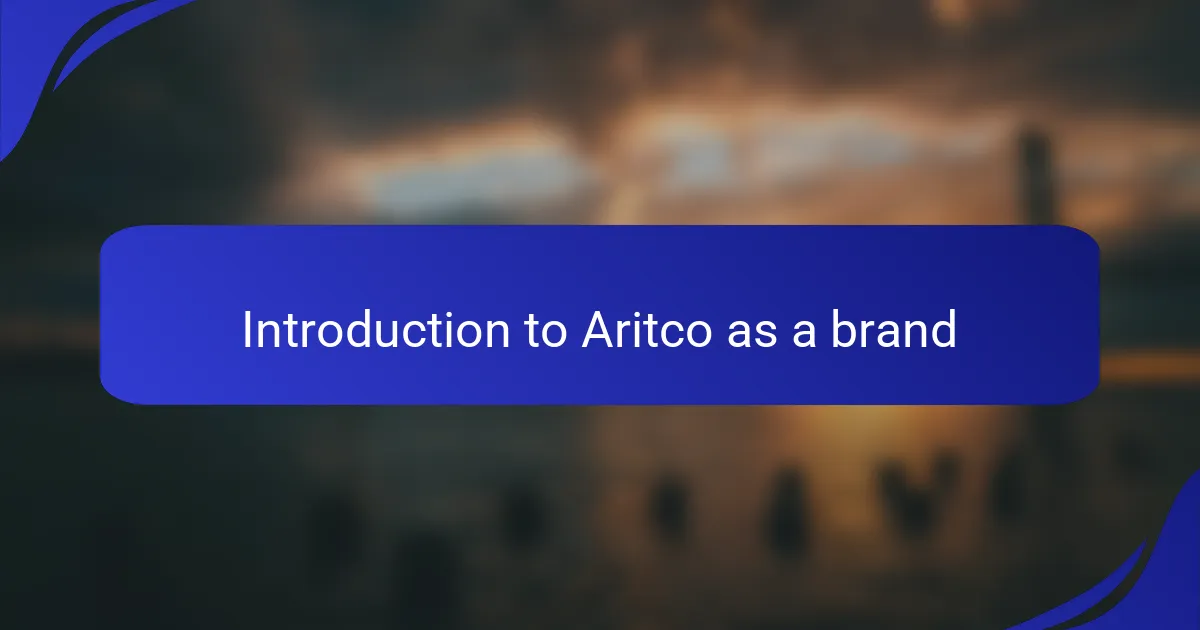
Introduction to Aritco as a brand
Aritco is a brand that has significantly transformed the accessibility landscape within the elevator industry. I admire their commitment to innovation and user-friendly designs, which reflect a deep understanding of the diverse needs of their customers. In my experience, Aritco’s products don’t just provide a means of transport; they enhance the independence and quality of life for many individuals, making spaces more navigable for everyone.
The brand is known for its stylish and functional home lifts, which come in various designs to fit different environments. What I find particularly impressive is how Aritco balances aesthetics with practicality—creating solutions that genuinely resonate with users. It’s inspiring to see a company that prioritizes inclusivity while also focusing on design and usability.
| Feature | Aritco Elevators |
|---|---|
| Design | Stylish, customizable options |
| Accessibility | Focus on enhancing mobility for all |
| Technology | Innovative features for ease of use |
| Environmental Impact | Eco-friendly design practices |
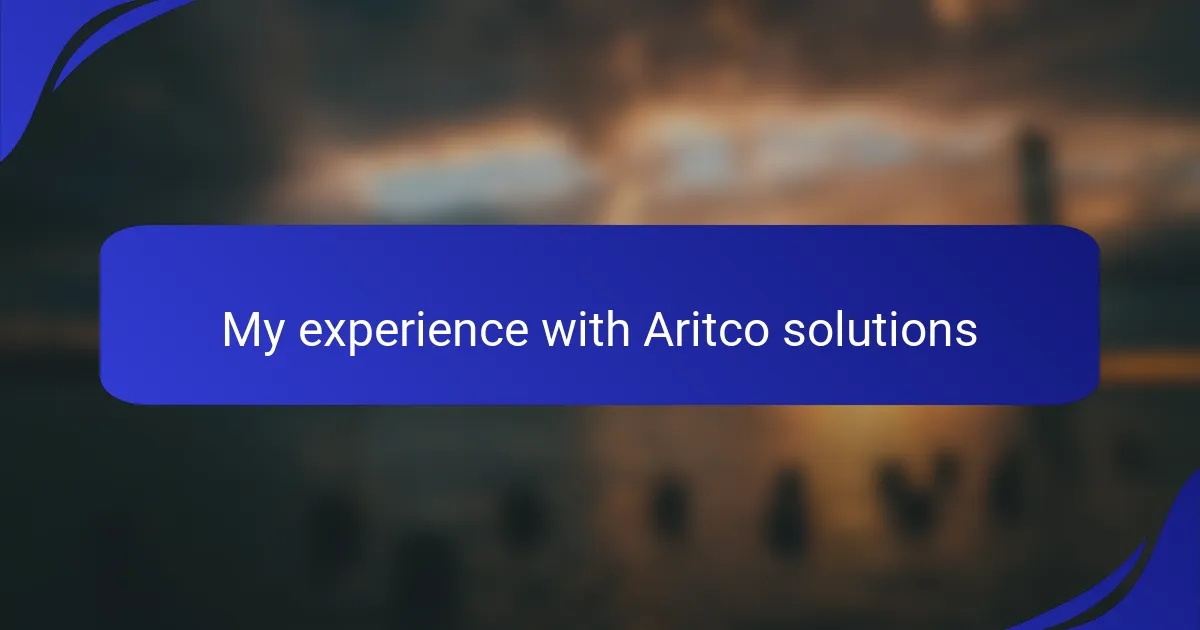
My experience with Aritco solutions
My experience with Aritco solutions has been quite enlightening, especially when I first encountered their platform lifts at an industry exhibition. I remember watching how seamlessly the lift moved, effortlessly accommodating users of all ages and abilities. It was inspiring to see a solution that genuinely prioritizes accessibility while maintaining an elegant design.
What struck me most was how Aritco’s team passionately discussed their commitment to inclusivity. It’s not just about providing an elevator; they create environments where everyone feels welcome and empowered. Their focus on user-friendly technology resonates deeply with me, as I believe accessibility should be a fundamental aspect of design.
- Aritco lifts feature intuitive controls, making them easy for everyone to operate.
- The design blends functionality with aesthetics, ensuring they fit beautifully in any environment.
- I’ve seen firsthand how their solutions have transformed spaces, making them more accessible for those with mobility challenges.
- They prioritize safety features, which gives users and their families peace of mind.
- The customer service is top-notch, with a team that genuinely cares about user satisfaction and accessibility needs.
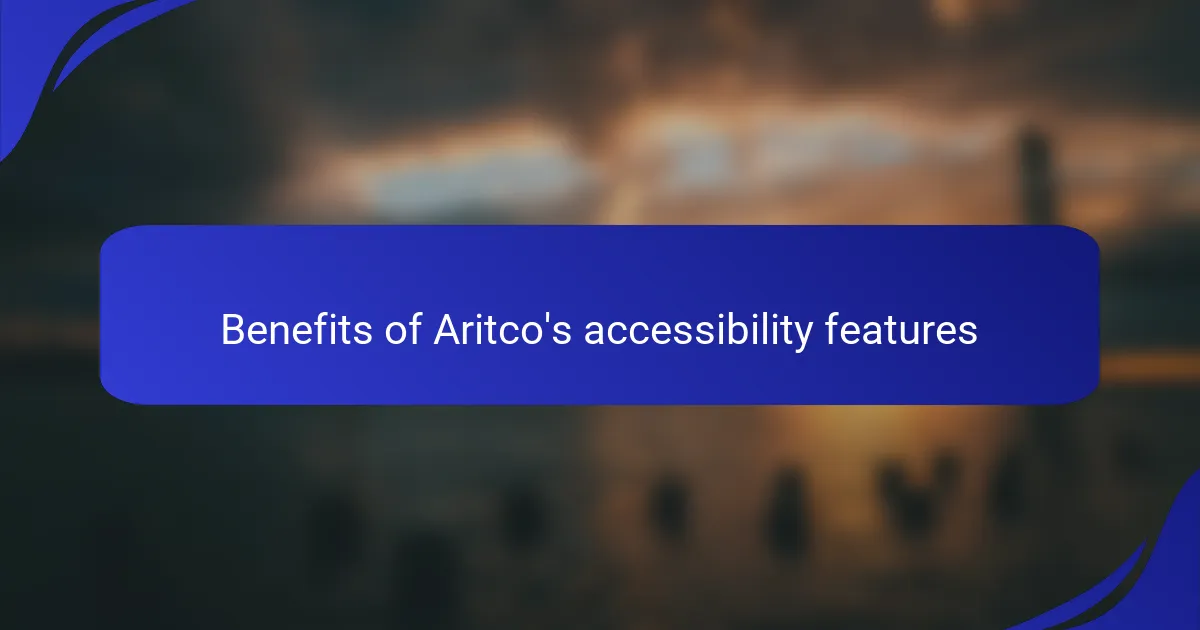
Benefits of Aritco’s accessibility features
Aritco’s accessibility features genuinely stand out in creating inclusive environments. From my experience, using their lifts can be a game-changer for those with mobility challenges. I’ve seen firsthand how their thoughtful designs allow individuals to maintain independence, a vital aspect of dignity and quality of life.
The benefits of Aritco’s accessibility solutions include:
- User-Friendly Controls: Simplified buttons and touchscreens make it easy for everyone to operate.
- Customizable Designs: Options to fit various spaces, allowing seamless integration into any building.
- Enhanced Safety Features: Emergency alarms and backup power systems ensure peace of mind during use.
- Space Efficiency: Compact designs that can fit in tight spaces without sacrificing accessibility.
- Elegant Aesthetics: Stylish choices that blend with modern architecture, proving that functionality can also be visually appealing.
These features not only facilitate basic mobility but also foster a sense of belonging in community spaces.
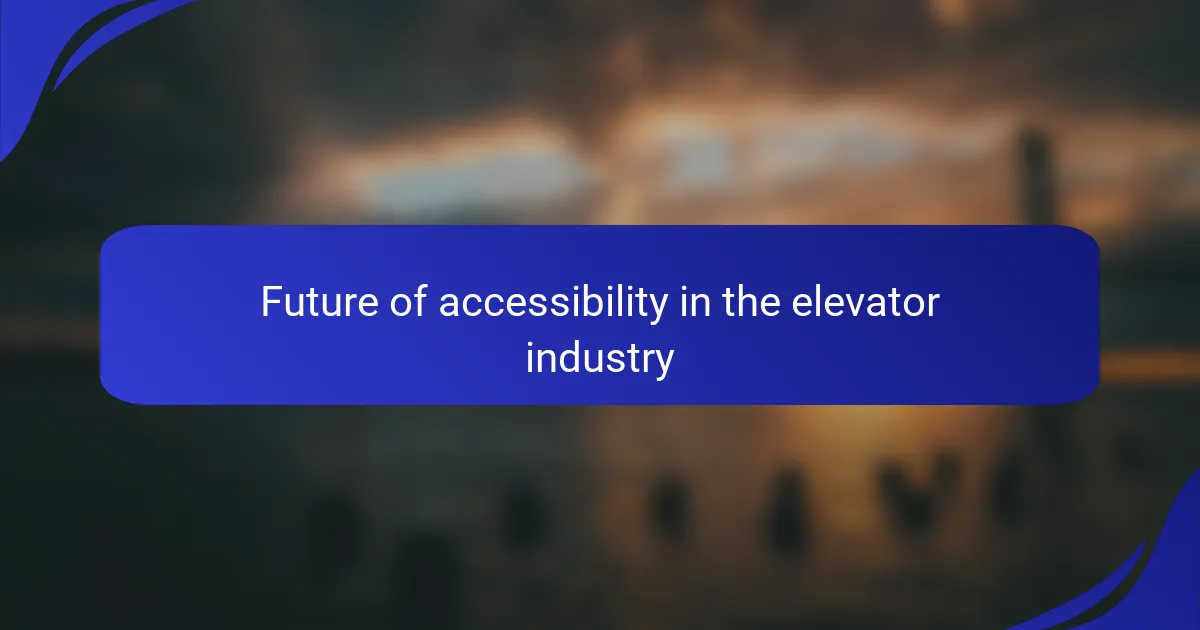
Future of accessibility in the elevator industry
As I reflect on the future of accessibility in the elevator industry, I can’t help but feel a sense of optimism. The advancements we’ve seen in technology, from voice-activated controls to smart sensors, will make elevators more inclusive than ever before. I remember a previous project where we installed an innovative elevator system in a community center; seeing users of all abilities navigate it with ease was incredibly rewarding.
Looking ahead, the integration of these enhanced accessibility solutions will not only comply with regulations but also cater to a diverse array of needs. This transformation will contribute significantly to a more equitable society, where mobility is a right, not a privilege.
- Increased use of AI to customize journey experiences for individuals.
- Enhanced real-time monitoring systems for improved safety and maintenance.
- Development of compact and stylish elevators that fit in any architectural style while remaining accessible.
- Greater emphasis on user-friendly interfaces that cater to all ages and abilities.
- Community-focused designs that involve feedback from users to tailor accessibility options.
